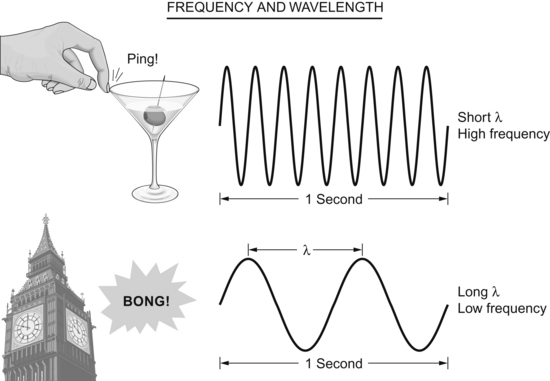Chapter 2 Principles of Ultrasound Christopher J. Gallagher and John C. Sciarra Ultrasound is sound waves propagated through a medium at a frequency above that which we can hear. Imaging depends on displaying the time required for an ultrasound pulse to go to a cardiac structure and return. We acoustically challenged humans only hear from 20 cycles/second to 20 000 cycles/second, or 20 kilohertz (named after the famous physicist and car-rental magnate). Keep in mind that sound, or ultrasound, must get propagated through a medium. Note that frequency is the number of complete cycles per second, and wavelength is the distance from one corresponding area to the next (usually peak to peak). Propagation velocity is the wavelength ∞ frequency.
Nature of Ultrasound: Compression and Rarefaction
Frequency, Wavelength, and Tissue Propagation Velocity

![]()
Stay updated, free articles. Join our Telegram channel

Full access? Get Clinical Tree


Thoracic Key
Fastest Thoracic Insight Engine
